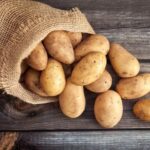Fruits and vegetables are our source of vitamins during the winter months. However, some produce is highly perishable and requires special care.
We will share tips on how to keep your fruits and veggies fresh for months.
Onions
Plastic bags are a great option for storing onions as they need air, not moisture.
Never store onions with potatoes as the latter releases moisture, causing onions to spoil. And if you don’t want to hang bags all over your kitchen, invest in a cute basket to store them.
Potatoes
Potatoes thrive in dark and cold conditions. It’s best to store them with tea tree leaves, as these leaves release phytoncides, protecting the potatoes from rotting.
Keep potatoes away from onions and apples, as they emit gases that can cause spoilage.

Beets
Sugar beets are perhaps the only good neighbor for potatoes. They absorb extra moisture and are even more resilient. Place beets on top of potatoes.
Apples
Apples should be stored in cool, dark places, ideally between 32°F and 44°F. Alternatively, you can keep them in cardboard boxes, ensuring sufficient ventilation by creating some holes in the box.
Carrots
Carrots are typically stored in sand, onion skins, or even sawdust—anything that can absorb moisture and keep the vegetables dry. It’s best to store carrots in a cellar at 32°F-35°F.
A quick tip for soup and stew prep: Peel and chop carrots, then wrap them in plastic. You can store these prepped carrots in your freezer.
Garlic
Garlic is easy to store; just keep it in a well-ventilated, dark place with minimal moisture. Garlic is often hung in kitchens and can be stored in mesh bags. Alternatively, you can place them in shallow containers.
Cabbage
It’s challenging to store cabbage at home, and the ideal temperature is 32°F-35°F. Remove the outer leaves and wrap the heads in three layers of paper. Ensure the heads don’t touch each other, and check them regularly to prevent rot.
Pumpkins
You can store pumpkins under your bed if the temperature stays below 68°F. A better option is a warm balcony, where the temperature never drops below 37°F. Place the pumpkins on wood or cardboard and cover them with newspaper. Ensure the pumpkins don’t touch each other.
Source: GĐ&TĐ



































